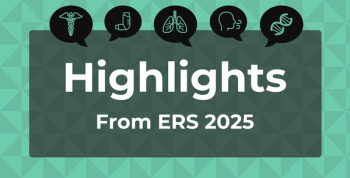
iAMD Progression Linked to Dysregulation of Complement Pathways
Key Takeaways
- Dysregulated complement pathways are linked to progression from iAMD to advanced AMD, including NVAMD and GA.
- Higher systemic levels of C4, C4b, and a reduction in C3 are associated with increased risk of advanced AMD progression.
The hazard of the progression of intermediate age-related macular degeneration (iAMD) was higher in those whose complement pathways were not regulated.
Identifying patients at a high risk of intermediate
AMD is a
All participants in this study were individuals who could attend the UCHealth Sue Anschutz-Roders Eye Center retina clinics in Colorado. All participants were also aged 55 to 99 years. The medical history, a review of multimodal imaging, and a sample of plasma were all collected from the participants of the study. Plasma and multimodal imaging were collected during annual visits. Individuals who had active retinal or uveitis diseases that affected the macula were excluded from the study. Time to progression to advanced AMD in the first eye was the primary outcome with the secondary outcome being time to progression to either neovascular AMD (NVAMD) or geographic atrophy (GA), both forms of advanced AMD.
There were 325 participants included in this study, all of whom had iAMD, and had a mean (SD) age of 76 (7.0) years. A total of 65% of the cohort were women and the mean follow-up time was 3.9 years across the full cohort. There were 110 (34%) who progressed to advanced AMD, of which 64 progressed to GA and 46 to NVAMD.
Higher systemic levels of C4 and C4b were found to have a link to the progression of any form of advanced AMD. A 1-log10 reduction in C3 was also associated with an increase in the hazard of progression of advanced AMD. A shorter time to progression to any advanced AMD was associated with a higher ratio of C3a/C3 (HR, 49.4; 95% credible interval [CrI], 5.2-675.3). A hazard of advanced AMD progression was associated with higher levels of the inhibitor, factor I (HR, 525.9; 95% CrI, 5.5 to 1.1 × 105). Lower levels of systemic C5, C5a/C5, and sC5b-9/C5 were associated with a higher risk of progression. An elevated hazard of progression to GA was associated with C3a/C3 and C5a/C5.
There were some limitations to this study. There was reduced statistical power that was further reduced when outcomes were split between NVAMD and GA. Estimates may be biased due to some loss to follow-up. Nonignorable dropout was not addressed and could lead to bias. Time between visits where progression occurred was not measured. All participants came from an academic clinic, which may limit generalizability.
The researchers concluded that a link between complement factors and hazard of progression to advanced AMD exists in patients living with iAMD. The study is ongoing and will continue to evaluate for other associations.
“The findings of this study support the possibility of identifying a high-risk group of patients with iAMD for personalized ophthalmic care and targeted systemic treatments to attenuate the risk of progression to advanced AMD,” the authors concluded.
References
1. Lynch AM, Grove NC, Wagner BD, et al. Dynamic risk of systemic complement activation with time to progression to advanced age-related macular degeneration. JAMA Ophthalmol. Published online June 12, 2025. doi:10.1001/jamaophthalmol.2025.1608
2. Age-related macular degeneration (AMD). National Eye Insititute. Updated June 22, 2021. Accessed June 24, 2025.
Newsletter
Stay ahead of policy, cost, and value—subscribe to AJMC for expert insights at the intersection of clinical care and health economics.













































